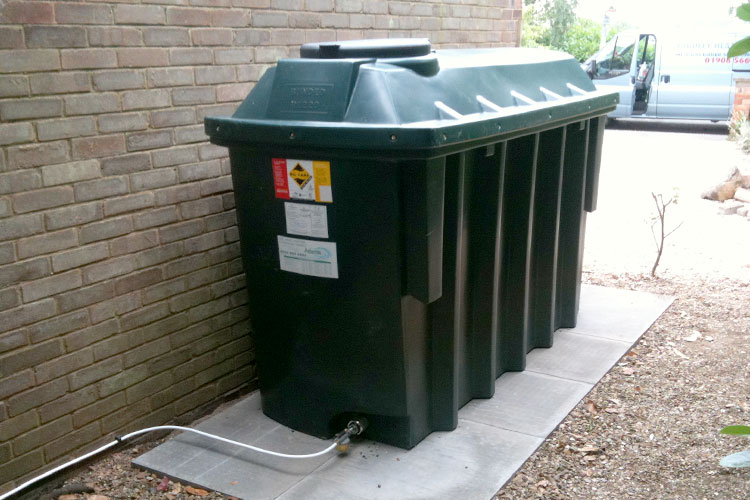Domestic oil tanks are prevalent in houses that are located in regions, where a main gas supply or a gas connection is not available.
They are designed in different sizes to hold about 150 to 400 gallons and the weight also varies accordingly.
Safety tips
Safety precautions are vital to the security of any oil tank system, and hence the specified criteria should be followed to avoid oil spills and unwanted consequences.
Usually made of materials like steel or other composite materials, these tanks are susceptible to corrosion. Therefore, they are preferably installed indoors, so that they are safeguarded from extreme temperatures and tough weather conditions.
- However, if they have to be installed outdoors, they should be placed on non-combustible surfaces, such as a concrete slabs or on patio stones.
- They should not lean against walls, in order to eliminate rust, and should be over fifty feet away from a well.

As much as thousand liters of oil could leak from a tiny pinhole within about eight hours or so, and hence it is essential to inspect oil storage tanks regularly. Signs of corrosion, cracks or dents should be checked without delay and treated appropriately.
- Applying one or more coats of rust-proof paint over the entire tank is an efficient way to prevent corrosion. Besides, they should be cleaned from time to time, without which accumulated sludge and water are likely to cause internal corrosion.
- A ventilation pipe is another important requirement for oil tank safety. It should be at least equal to the size of the largest fill or that of the withdrawal connection from the tank.
- Further, ventilation pipes can function effectively only if the pumping does not exceed eighty gallons per minute.
Some private buildings have group tanks, with each individual tank having the same capacity of a domestic unit.
As group tanks combine piping systems between the individual units, they require lesser filtration pipes. A group tank system can be installed either outside or inside the premises, depending on building specifications and norms.
The interior chambers of a group system can be altered by custom design, in accordance to the facilities.
Oil tank spills
Oil spills affect the environment adversely, and hence adequate precaution measures should invariably be applied. One liter of oil is capable of contaminating a million liters of water.
Leaks or spills are usually due to improper installation, overfilling or corrosion. Fuel oil spilled in residential basements could affect the air quality within the building and pose a health hazard as well.
In case, homeowners discover spills or leaks, the foremost step is to eliminate any source of ignition.
Then the leak should be stopped with proper assistance from the oil supplier or someone who has the relevant knowledge or qualification. Spilled oil or oil contaminated material should not be washed down to the drain or sewer system.
Rather the spilled oil should be cleaned up or absorbed using rags, newspapers, pails or sheets. While the remaining oil should be transferred to an approved tank, the spilled oil and contaminated material should be disposed properly with the aid of the concerned department.
Oil tanks are mostly cylindrical in shape and installed above the ground or underground. Underground tanks are expected to last for ten to fifteen years.
Either way, they should be checked every now and then for leaks, particularly during winter, adhering to safety rules and regulations.